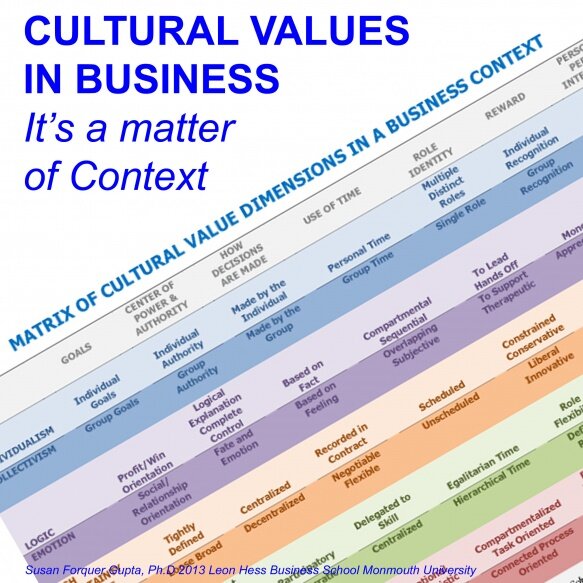Integrating national culture measures in the context of business decision making: An initial measurement development test of a mid level model
Susan Forquer Gupta
Cross Cultural Management: An International Journal, Volume 19, issue 4, 2012
Abstract
Purpose – The purpose of this paper is to detail the measurement development of a set of indices that manifest culture in the context of business decision making.
Design/methodology/approach – Survey research was conducted eliciting opinion data from managers of firms in two countries, the USA and Hungary, for cross-cultural comparison. Critical issues of measurement equivalency are assessed using item response theory (IRT) prior to the comparison of the US and Hungarian manager samples.
Findings – The following sub-indices were identified as a result of the analysis: individualism in decision making; individualism and authority; logic/emotion; equality as people, equality of authority, tolerance for ambiguity in decision making; tolerance for ambiguity and flexibility, and time orientation.
Research limitations/implications – While the framework provides a broad representation of the cultural value dimensions (CVD) in a business context, it cannot be said that it encompasses the entire dimension or where the true endpoints will lie for the each of the five continuums. As additional culture groups are tested, it will be possible to ascertain where the true midpoint and endpoints of the scale lie.
Originality/value – The framework was utilized to place the five CVDs in a business context, resulting in a very even representation of the manifestation of cultural values across decision-making processes in a firm. As a result, a more complete picture of current CVD scores is provided by the data for the two populations sampled. The sub-indices identified not only aid in the establishment of equivalence and allow for comparison of the two groups, but also provide deeper insight into the similarities and differences between the two groups that were masked in the original CVD structure.
© Emerald Group Publishing Limited
Read Full Article







